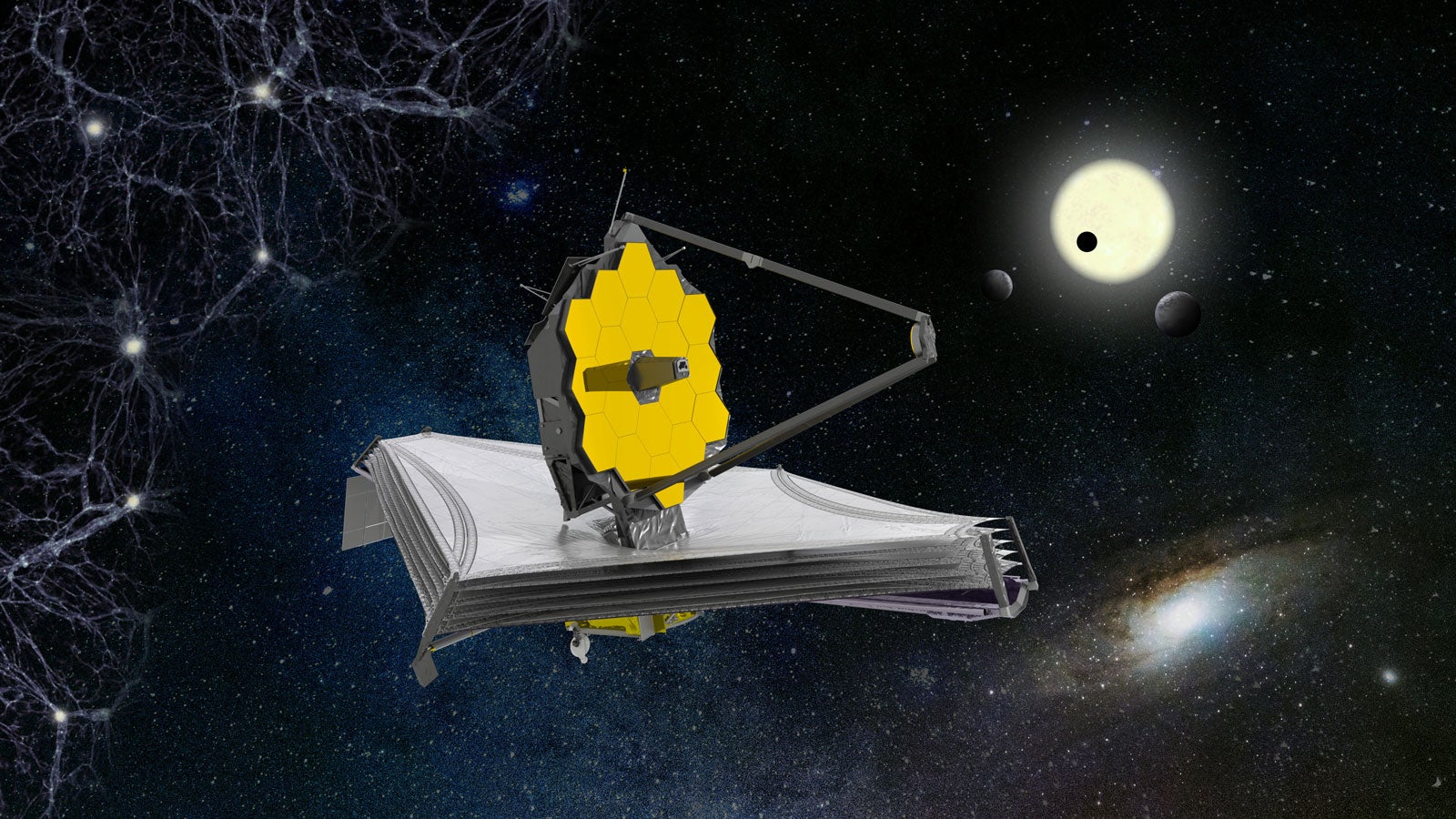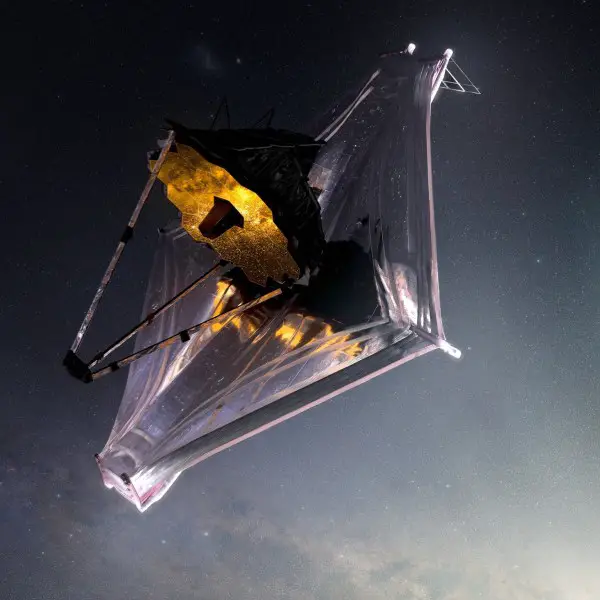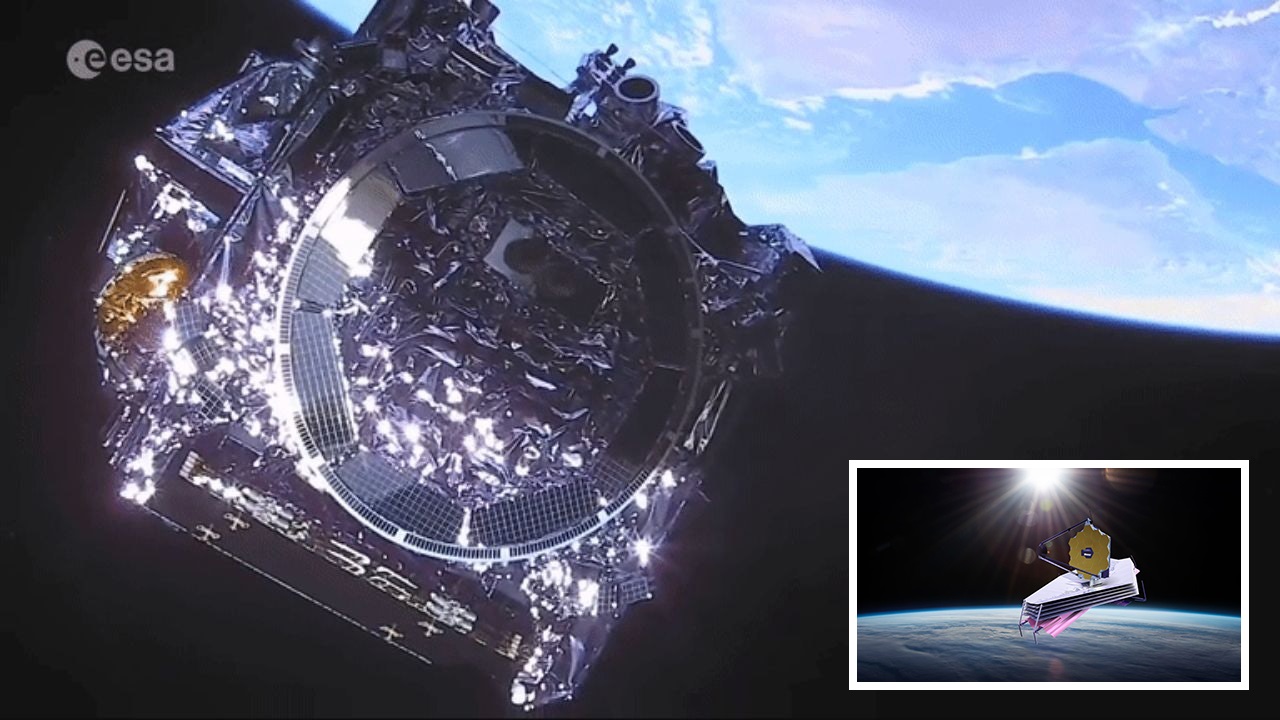It was not only Santa who was getting ready to take to the skies for a very important journey on Christmas Eve. Engineers from NASA, Canada’s Space Agency, and Europe’s Space Agency (ESA) were ready to launch the $10 billion James Webb Space Telescope into space.
The next-generation space telescope was launched on Christmas Day from the ESA’s launch site in Kourou, French Guiana, after being folded and loaded aboard an Ariane 5 rocket.
It was one of the most eagerly awaited moments in the telescope’s 33-year journey from conception to collection of the first photographs of the universe.
The JWST was released into space soon after being put into orbit onboard the Ariane 5 rocket, to complete the bulk of its voyage on its own.
The European Orbit Agency (ESA) has now produced a mesmerizing video of the telescope’s maiden voyage into space. While it is the craft’s first step on its own power, it is also the craft’s last appearance before it embarks on its 10-year journey.
The video depicts the separation of the multibillion-dollar space observatory from the rocket. The solar array can also seen deploying as the telescope gleams in the sunshine.
The space telescope will be powered by these onboard solar cells as it travels a million miles from Earth to its destination.
The film gives a last breathtaking view at the probe, which was built to gaze into the origins of the cosmos, as Webb gleams in the sunshine.
And, although it is all very majestic and meaningful, I can not help but imagine this scene in a Christopher Nolan film or a Portishead music video. Please watch it and tell me if you agree.

The JWST, on the other hand, has gone a long way since this video was shot. Engineers have started deploying different sections of the vehicle as it approaches its ultimate destination in orbit.
As the JWST’s tennis-court-sized sunshields were deployed this week, scientists were on edge. The shields were created to protect the telescope’s mirrors and cameras from the sun’s and other planets’ heat, glare, and radiation.
Engineers then started deploying the observatory’s secondary mirrors, which will concentrate light onto the observatory’s cameras, after the primary mirrors were successfully unfolded. The space agencies then set about unfolding the craft’s massive main mirror.
The primary mirror of the JWST is made up of three pieces, including two wings on each side of the main body. The 6.5 metre mirror is made up of three mirror segments that must be folded out on each of the two wings.
This phase of the JWST deployment should be finished today.
After that, all of Webb’s delicate, intricate processes will be completed, and all that remains is to fine-tune each element and the craft’s location in orbit before the telescope can begin its investigation.
The JWST will acquire photographs of faraway planets and galaxies once it is ready to launch its mission, including some that may provide a look into the beginnings of the universe.
NASA Explains Why Webb Doesn’t Have Any External Cameras
NASA eventually launched the James Webb Space Telescope on Christmas Day 2020, after years of delays and difficulties, ushering in a new age of space observation. The observatory is still in the early phases of its mission, which involves everything from setting up its high-gain antenna and other components to initiating its orbital injection burn.
The full deployment procedure will take months, according to NASA’s mission plan, with the James Webb Space Telescope not starting routine scientific operations until roughly six months following launch, placing the completion of the deployment phase around mid-summer this year.
NASA’s official Twitter account devoted to the space observatory revealed why cameras were not installed on the telescope to film the deployment procedure in the coming months in a new tweet thread. Despite the fact that incorporating cameras “seems like a no-brainer,” NASA believes there are a number of major reasons for skipping these devices.
The main reason NASA did not add cameras to photograph the telescope on its voyage is that the side facing away from the Sun is completely black, but the side facing the Sun is so brilliant that any photographs taken would be loaded with strong contrast and large light glares.

As if that were not enough, NASA would have to power any cameras on the observatory, which would necessitate running wires to them. Vibration and heat might travel through the cables to the cameras, lowering picture quality, and the “cool side” of the space telescope could bring some “sensitive” power balancing difficulties.
In the same vein as temperatures, NASA notes that a unique camera would have had to be built to resist the very low temperatures on the side of the observatory facing away from the Sun. The James Webb observatory was already a difficult endeavor, and adding cameras would just add to the difficulty.
During its first weeks in orbit, the observatory is installing numerous systems, as previously stated. The physical shape of the telescope changes as a result and any cameras placed to it must be constructed such that these deployments do not interfere with their capacity to collect photos of the spaceship.
NASA points out that it would have had to figure out the best camera loadout for any meaningful photographs, including how many cameras were required and how to acquire remarkable images without making the overall arrangement too complicated. In view of these difficulties, the best answer was to leave such cameras out totally.
Instead, the space agency said that a number of sensors are being utilized to establish if the launch was successful and whether the deployment is going as planned. The mission’s Earth-based crew gets telemetry data from the observatory while it runs in orbit, allowing them to monitor the system and create visual representations of it using a “unique visualization tool.”

